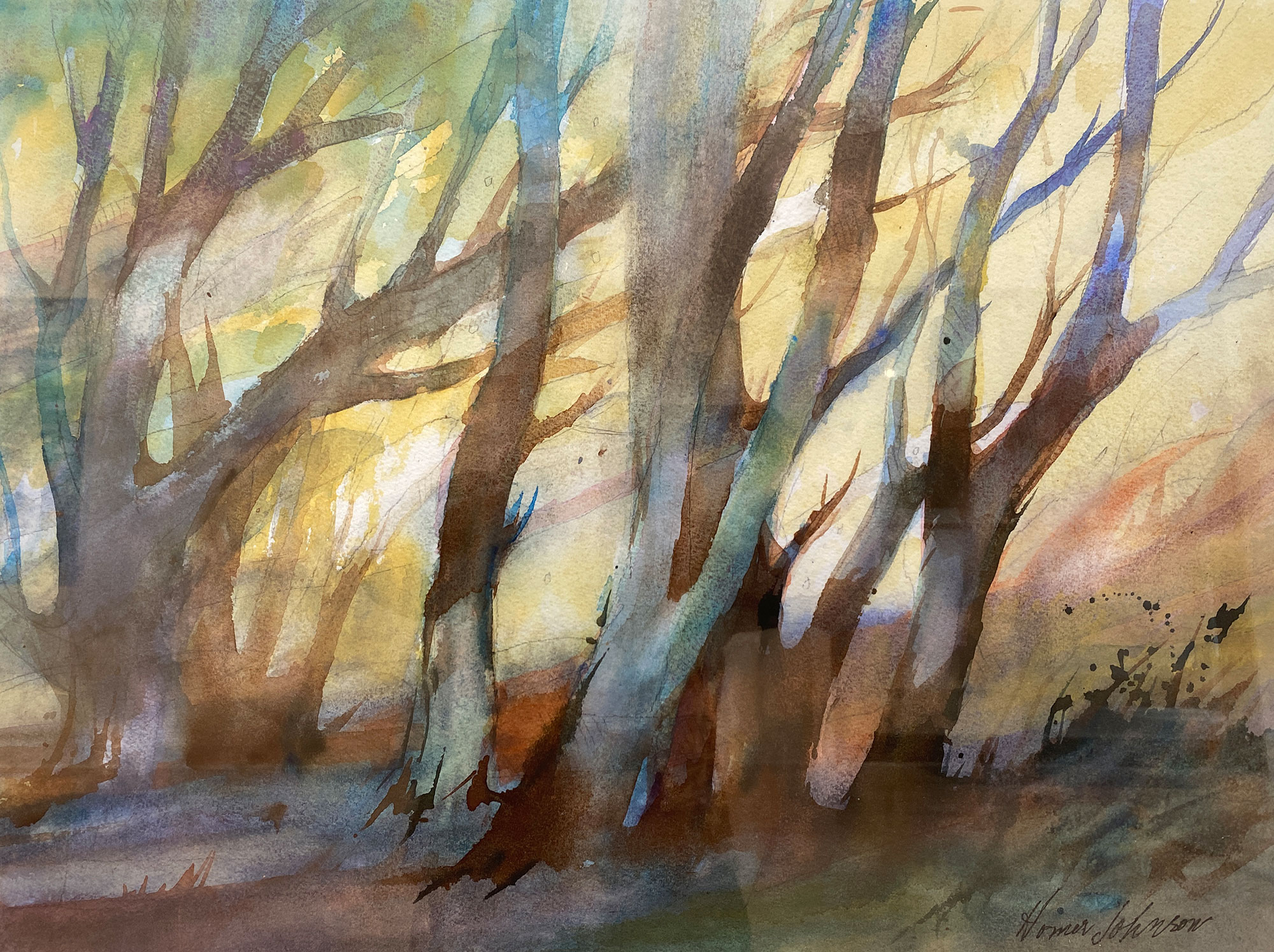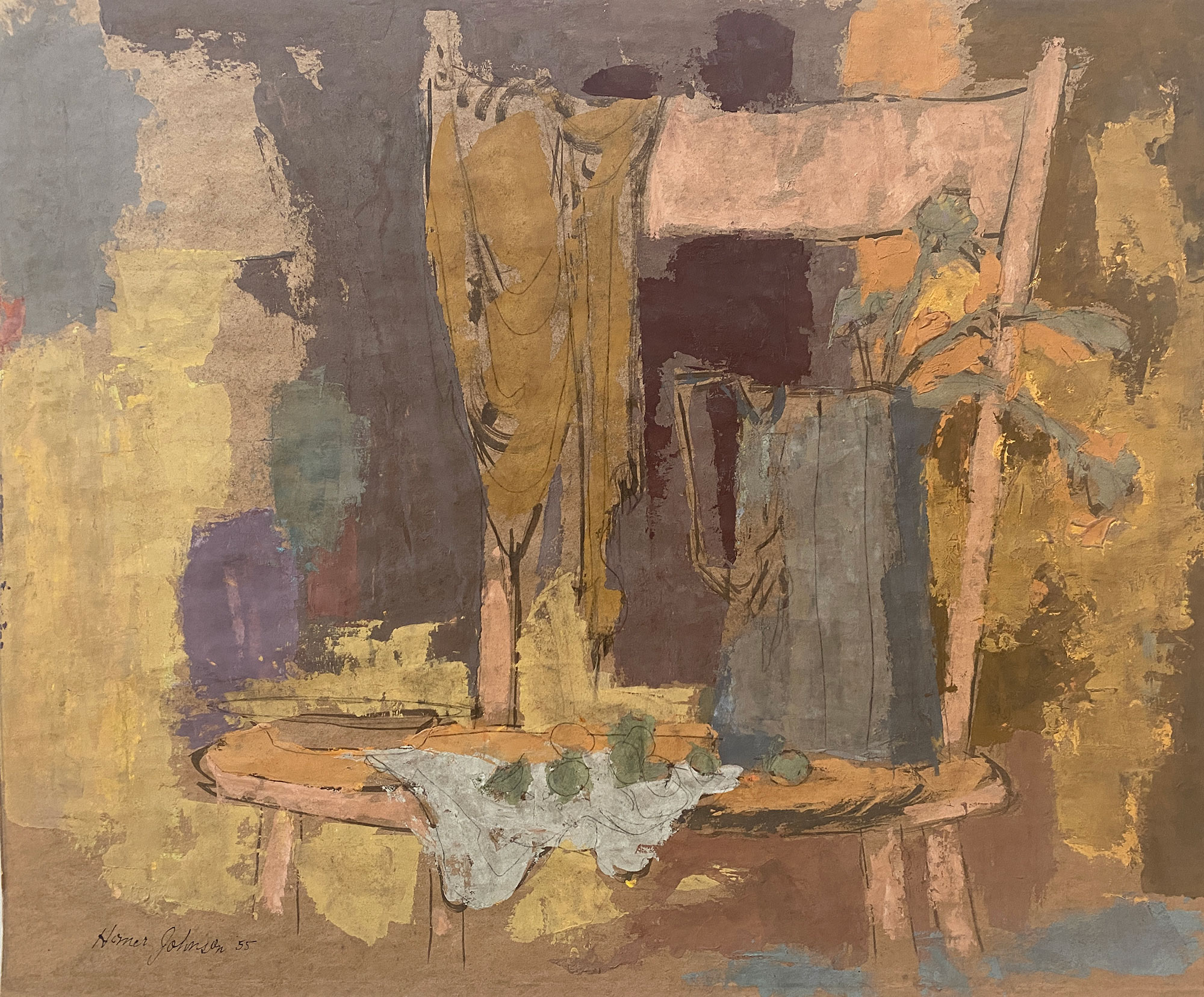The French philosopher Henri Bergson said that life’s essence is in the movement by which it is transmitted. I agree with this idea. My work has always been involved with movement, gesture, and light. If I can still feel the gesture at the end of the painting process, I feel that I have succeeded. The essence of what I am searching for is in the movement. Light plays an important role in my work as well, by illuminating the movement. My work often involves figure groupings, such as mother and child themes or dancer themes. These ideas have been filtered through memory and reconstructed in the present. My years in Vermont have shown me that the same search for light and movement can be generated by landscape painting.
~Homer Johnson (1925-2020)
See Homer Johnson’s lovely memorial website and view available work



















